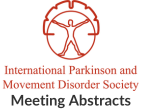Is past use of statins associated with lower incidence of Parkinson’s disease?
Objective: To examine the relation of past exposure to statins with Parkinson’s disease (PD) incidence. Background: Drug repurposing has recently emerged as a promising approach…“I’ve got cataracts and can’t read the information sheet about the medication you have given me”*
Objective: This study reports People with Parkinson’s (PWP) perception on their illness, its meaning to them and their view of the interactions they have with…Identifying and Controlling Variability in Digital Health Measures in Parkinson’s disease Clinical Trials
Objective: The 3DT initiative of the Critical Path for Parkinson’s Consortium (CPP) aims to advance the regulatory maturity of digital biomarkers, for clinical studies in…Impact of 3-month earlier versus postponed initiation of opicapone versus entacapone in levodopa-treated patients with Parkinson’s disease and motor fluctuations
Objective: This post-hoc analysis evaluated the impact of 3-month earlier versus postponed initiation of opicapone (OPC) in patients with Parkinson’s disease (PD) and motor fluctuations.…Effects of Opicapone on Sleep in Patients with Parkinson’s Disease and Motor Fluctuations
Objective: To assess the effects of opicapone (OPC: 50 mg, once-daily) on sleep in patients with Parkinson’s disease (PD) and motor fluctuations. Background: OPC is…A new fully implantable Adaptive Deep Brain Stimulation system tested for the first time in patients with Parkinson’s Disease
Objective: This multicenter double-blind crossover study has been designed to evaluate the safety and efficacy of adaptive Deep Brain Stimulation delivered through an innovative IPG…The Impact of Visual Cueing on Gait Velocity in those with Parkinson’s Disease with Freezing of Gait
Objective: To determine the ease of use and preliminary effectiveness of shoe-mounted visual cue (laser) on gait velocity in those with Parkinson’s Disease and freezing…The early post-transplant period in Parkinson’s disease: the low intravenous dose effect.
Objective: To compare the early results of the introduction of MSCs via different routs of administration on the dynamics of the motor symptoms in patients…Evaluating a Novel Home-Based Care Pathway for People with Parkinson’s Disease
Objective: To evaluate the acceptability, feasibility, safety and effectiveness of a novel remotely delivered Parkinson’s care pathway. Background: Current care pathways for people with Parkinson’s…A French national multicentric prospective study of the 1-year impact of STN-DBS on speech in Parkinson’s disease: profile of progression and prognostic factors.
Objective: 1) To describe the evolution of speech in a large cohort of patients before and 1 year after STN-DBS. 2) To search for preoperative…
- « Previous Page
- 1
- …
- 274
- 275
- 276
- 277
- 278
- …
- 338
- Next Page »
